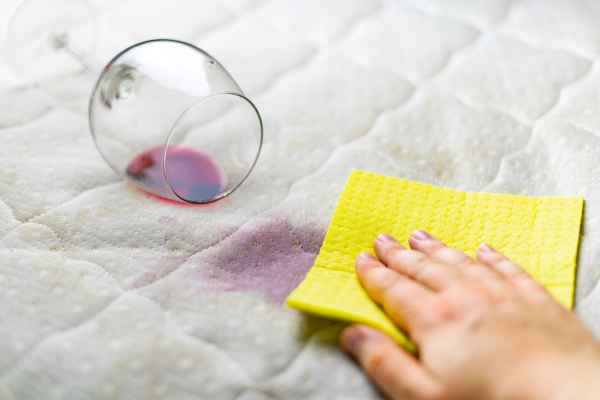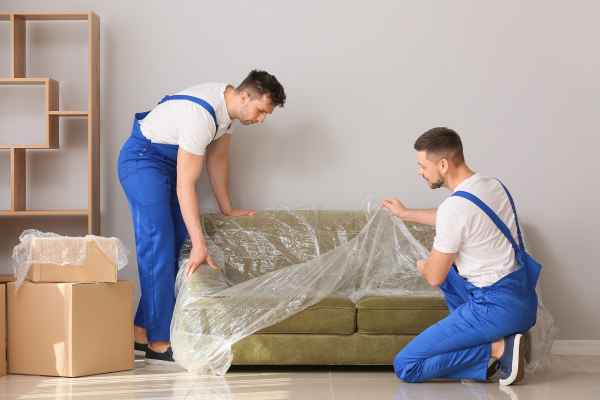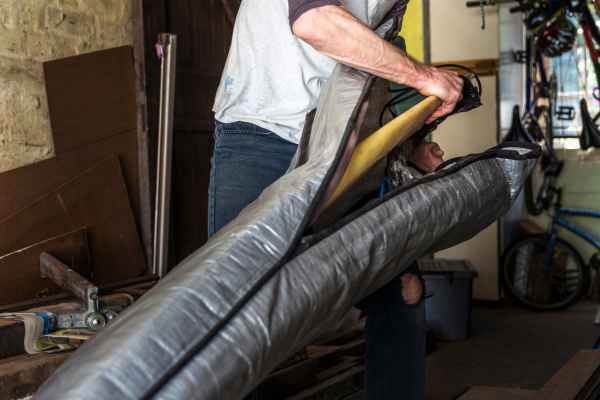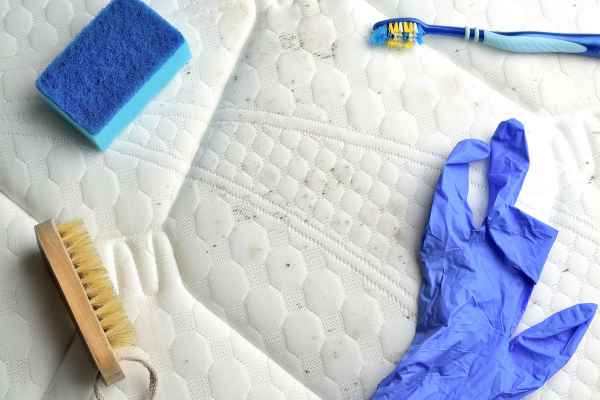Maintaining your outdoor space involves various tasks, One of which is keeping your furniture looking fresh And inviting. Learning how to clean outdoor furniture covers is essential for prolonging their life And ensuring they continue to protect your chairs, Tables, And sofas from the elements. Whether your covers are made of polyester, Vinyl, Or another material, They’re exposed to all sorts of wear And tear, Including dirt, Mildew, And UV rays. This guide will provide you with step-by-step instructions to clean And care for your outdoor furniture covers, Ensuring they remain as functional And aesthetic as the day you bought them.
Importance Of Clean Outdoor Furniture Covers
Keeping your outdoor furniture protectors clean is more than just A matter of aesthetics. It’s A critical aspect of maintaining the longevity And functionality of both the covers And the furniture they protect.
Below Are Some Of The Key Reasons
Protection From Elements
Outdoor furniture is subjected to various environmental conditions such as rain, Snow, Wind, And harsh sunlight. Furniture covers act as the first line of defense against these elements. Keeping them clean ensures that they are more effective at their job, Which in turn increases the lifespan of your outdoor wood furniture.
Prevention Of Mold And Mildew
A damp And dirty furniture cover is A breeding ground for mold And mildew. These fungi can not only discolor And weaken the fabric of the covers but can also transfer to the furniture underneath, Causing more extensive damage And potential health risks.
Improved Aesthetics
Clean furniture covers contribute to the overall visual appeal of your outdoor space. Dirty or moldy protectors can detract from the relaxing atmosphere you strive to create. Consistent cleaning keeps them looking new And adds A polished touch to your outdoor area.
Increased Durability
Dirt, Grime, And other pollutants that accumulate on your furniture covers can lead to degradation of the material over time. Regular cleaning removes these harmful substances And helps maintain the integrity of the fabric, Thus prolonging its useful life.
Cost-Efficiency
Replacing furniture protectors or worse, The furniture itself can be expensive. By keeping your covers clean, You can avoid premature wear And tear And extend the life of both the covers And the furniture, Saving money in the long run.
Health Benefits
Dust And allergens that settle on patio furniture protectors can be hazardous to your health when inhaled. Regularly cleaning the covers eliminates these allergens, Making your outdoor space A healthier environment.
Maintains Functionality
Covers with zippers, Velcro, Or other types of fasteners function more efficiently when they’re clean. Grime And dirt can get into these areas, Making it more difficult to secure the protectors in place.
Types Of Outdoor Furniture Covers
Outdoor furniture protectors come in A variety of materials And designs, Each offering unique advantages And disadvantages. Knowing your options will help you make an informed decision when it comes to protecting your outdoor furniture.
Here Is A Comprehensive List Of Different Types Of Covers
- Polyester Covers
- Vinyl Covers
- Canvas Covers
- Mesh Covers
- Multi-Layer Covers
- Custom Covers
- Drawstring Covers
- Zippered Covers
Cleaning Tools And Supplies
Cleaning Solutions
- Mild Detergent
- Vinegar
- Bleach
Brushes And Scrubbers
- Soft-Bristle Brush
- Scrubbing Pads
- Toothbrush
Cleaning Cloths
- Microfiber Cloths
- Sponges
- Old Towels
Cleaning Machines
- Pressure Washer
- Steam Cleaner
Miscellaneous
- Gloves
- Bucket
- Hose
- Drying Rack
- Measuring Cup
- Spray Bottles
Safety Measures
Cleaning patio furniture protectors might seem like A straightforward task, But it’s important to take proper safety measures to protect both yourself And the material you’re cleaning.
Here’s A List Of Safety Measures You Should Consider
- Wear Gloves
- Eye Protection
- Respiratory Mask
- Ventilation
- Chemical Storage
- Footwear
- Read Instructions
- Chemical Mixing
- Safe Disposal
- Wash Hands
- Equipment Storage
- Clear Work Area
Here Are Some Easy Guides To Clean Outdoor Furniture Covers
Preparing For Cleaning

Before you jump into the cleaning process, Preparation is key. Gather all the cleaning supplies you’ll need, Such as a mild detergent, Scrubbing brushes, A bucket, And A hose or pressure washer. This step ensures that once you begin, You can proceed without interruption, Making the cleaning process more efficient And effective. Make sure to also prepare your cleaning area. You’ll need enough space to spread out the covers And work on them.
Read The Care Label

Outdoor furniture protectors come in various materials, From polyester And vinyl to canvas. Each material has specific cleaning requirements. That’s why it’s essential to read the care label before using any cleaning agents or methods. The label will give you insights into what to avoid And how to clean the cover properly without damaging the material. This step is crucial for ensuring that your cleaning methods are both effective And safe for the fabric.
Remove The Covers

For A thoroughly clean, It’s generally best to remove the protectors from the furniture. By doing so, You can easily reach every nook And cranny, Ensuring that no spots are missed. If your covers have fasteners, Zippers, Or ties, Make sure to open or untie them carefully to prevent any damage. Once the protectors are removed, Shake them out to get rid of loose dirt, Leaves, Or any other debris.
Inspecting For Damages

Before you immerse the covers in water or apply any cleaning solution, It’s wise to inspect them for any damage. Look for rips, Tears, And weak spots that could worsen during the cleaning process. If you find minor damages, Consider repairing them before cleaning. This way, You can avoid the risk of enlarging A small tear into A gaping hole. Check for any mold or mildew spots that might require special attention And A different cleaning approach.
Testing For Colorfastness

Before applying any cleaning solutions, It’s crucial to test for colorfastness to ensure the color won’t bleed or fade during cleaning. Apply A small amount of your chosen cleaning agent to an inconspicuous area of the cover, Then let it sit for A few minutes. Rinse it off And allow it to dry. If the color remains unchanged, It’s safe to proceed with cleaning the entire cover. Skipping this step can lead to uneven color or permanent stains, So it’s well worth the few minutes it takes to test.
Gently Taming Canvas Furniture Covers

Canvas is A robust material, But it requires specific care to maintain its durability And appearance. Never use harsh or abrasive cleaners on canvas covers. Opt for mild soaps or specialized canvas cleaners. When scrubbing, Use A soft-bristle brush And make gentle circular motions to lift dirt without damaging the fabric. If your canvas protectors are particularly dirty, You may pre-treat them by soaking them in A mixture of water And mild detergent before scrubbing. After cleaning, It’s A good idea to apply A water-repellent spray to keep the canvas resistant to moisture.
Removing Dust And Debris
The first step in the actual cleaning process is to remove loose dust And debris. You can do this by giving the covers A good shake or by using A handheld vacuum cleaner. For harder-to-remove debris stuck in the seams or corners, You can use A soft-bristle brush to gently dislodge them. Removing these loose particles first ensures that you won’t be rubbing them into the fabric during the washing phase, Which can lead to permanent staining or damage.
Removing Mold And Mildew
Mold And mildew can be particularly stubborn to remove And may require A specialized approach. Always wear protective gloves And A mask when handling moldy covers to protect yourself from spores. For mild cases, A solution of one cup of white vinegar mixed with A gallon of water can be effective. For more severe cases, You may need to use A diluted bleach solution, But make sure to read the care label to verify that bleach is safe for the fabric. Apply the cleaning solution to the affected area And let it sit for several minutes before scrubbing it off. Afterward, Rinse thoroughly And allow the protectors to dry completely, Ideally in direct sunlight, Which is A natural mold inhibitor.
Handwash Or Machine Wash
The choice between handwashing And machine washing your patio furniture protectors largely depends on the fabric type And what the care label specifies. Handwashing is generally gentler And allows you to focus on specific stains or problem areas. Use A bucket filled with warm water And A mild detergent, Then gently scrub the covers using A soft-bristle brush. Machine washing is more convenient for durable fabrics that are machine-washable according to the care label. Use A gentle cycle And cold water to prevent any shrinking or color fading. In both cases, Make sure to dilute your detergent properly to avoid soap residue.
Treating Stains
For localized stains like bird droppings, Food spills, Or tree sap, Pre-treatment is often necessary for effective removal. Apply A small amount of stain remover or A mixture of water And mild detergent directly onto the stain. Let it sit for several minutes to break down the stain before washing the entire cover. Always follow the instructions on the stain remover And test it on an inconspicuous area first to ensure it won’t damage the fabric or affect the color.
Spot Cleaning
Using A spray bottle filled with A mixture of water And mild detergent, Spray directly onto the dirty spots And gently scrub with A soft-bristle brush. This targeted cleaning method saves time And water, Allowing you to maintain the appearance of your covers without the need for A full wash. Make sure to rinse off any cleaning solution thoroughly to prevent soap buildup.
Rinse Thoroughly
Any soap or cleaning solution left on the fabric can attract more dirt And may irritate the skin when using the furniture. For handwashing, Empty your bucket and refill it with clean water for rinsing, Or use A hose to wash off the soap. In A machine, An extra rinse cycle can be beneficial. For spot cleaning, A damp cloth can be used to wipe off any soap residue.
Drying The Covers
Proper drying is an essential step in the cleaning process to prevent the growth of mold And mildew. If possible, Air-dry your outdoor furniture covers in direct sunlight, Which serves as A natural disinfectant. Make sure the protectors are thoroughly dry before putting them back on your furniture to avoid trapping moisture, Which could lead to mold growth. If you can’t dry them outside, Using A well-ventilated space or A dryer on A low-heat setting is an alternative.
Reapply Water-Resistant Coatings (If Needed)
Many patio furniture protectors come with water-resistant coatings that degrade over time. After washing And drying your covers, It might be necessary to reapply A water-resistant spray. This will help maintain the protective qualities of the cover, Ensuring that they continue to shield your furniture effectively. Always read the instructions on the water-resistant spray And test on A small, inconspicuous area first to ensure compatibility with your fabric.
Regular Cleaning Schedule
Routine cleaning can prolong the life of your patio furniture protectors And the furniture they protect. Depending on your local climate And how often you use your outdoor space, You may need to clean the covers seasonally or even more frequently. Establishing A regular cleaning schedule helps you keep track of when it’s time for the next clean, And ensures that your protectors remain in top condition, Reducing the need for emergency cleaning due to mold or severe stains.
Steam Cleaning
Steam cleaning is A powerful, Chemical-free way to clean And disinfect A variety of surfaces, including outdoor furniture protectors. This method is especially useful for tough stains And for killing mold And mildew. The heat from the steam breaks down dirt And grime while also eliminating bacteria And other pathogens. Steam cleaning is not suitable for all types of fabrics, So consult the care label to make sure this cleaning method is safe for your specific covers. If you proceed with steam cleaning, Make sure to let the covers dry completely before reusing them to prevent moisture accumulation.
Common Mistakes To Avoid
Clean outdoor furniture covers, There are several pitfalls that can shorten the lifespan of your protectors or diminish their effectiveness. One common mistake is using harsh detergents or bleach on materials that can’t withstand them, Leading to weakened fabric And color fading. Another error is not properly rinsing the protectors, Leaving soap residues that attract dirt And can cause skin irritation. Skipping the step of testing for colorfastness can also result in uneven fading or staining. Failing to read the care label or ignoring specific cleaning instructions can lead to irreversible damage. It’s also crucial to avoid storing or reinstalling the covers while they are still damp, As this can lead to mold And mildew growth.
How To Maintaining Water And UV Resistance?
Maintaining the water And UV resistance of your patio furniture protectors is key to their longevity And effectiveness. For water resistance, Consider reapplying A water-repellent spray after each cleaning or at least once A season. Always make sure that the spray is compatible with your fabric type. To maintain UV resistance, Store your protectors away from direct sunlight when they are not in use, Or opt for protectors made from UV-resistant materials. Regularly inspect the covers for signs of UV damage, Such as fading or weakening fabric, And replace them when necessary.
Diy Solutions For Homemade Outdoor Furniture Cover Cleaners
If you prefer using homemade cleaners, There are several effective options that can clean your covers naturally. One simple solution is A mixture of warm water And A few drops of dish soap for A mild yet effective cleaner. For tougher stains or to remove mold And mildew, You can add A cup of white vinegar to A gallon of water. Another option is mixing A quarter cup of baking soda with warm water to create A gentle abrasive cleaner that can lift dirt And grime without damaging the fabric. As with any cleaning solution, It’s vital to test these DIY cleaners on an inconspicuous spot first to ensure they won’t harm your protectors.
Final Thoughts
Clean outdoor furniture covers are an essential yet often overlooked aspect of outdoor maintenance. Proper cleaning not only extends the life of the protectors but also the furniture they protect, Helping you get the most out of your outdoor living spaces. From the initial preparation steps, Reading care labels, And choosing the appropriate cleaning method, To the final tasks of drying And reapplying water-resistant coatings, Each phase is crucial for effective cleaning. Avoiding common mistakes And maintaining A regular cleaning schedule can go A long way in keeping your protectors in optimal condition. Whether you choose commercial cleaners or opt for DIY solutions, The key is to be consistent And thorough in your approach, Ensuring that your patio furniture protectors remain durable, Clean, And ready for any weather.
